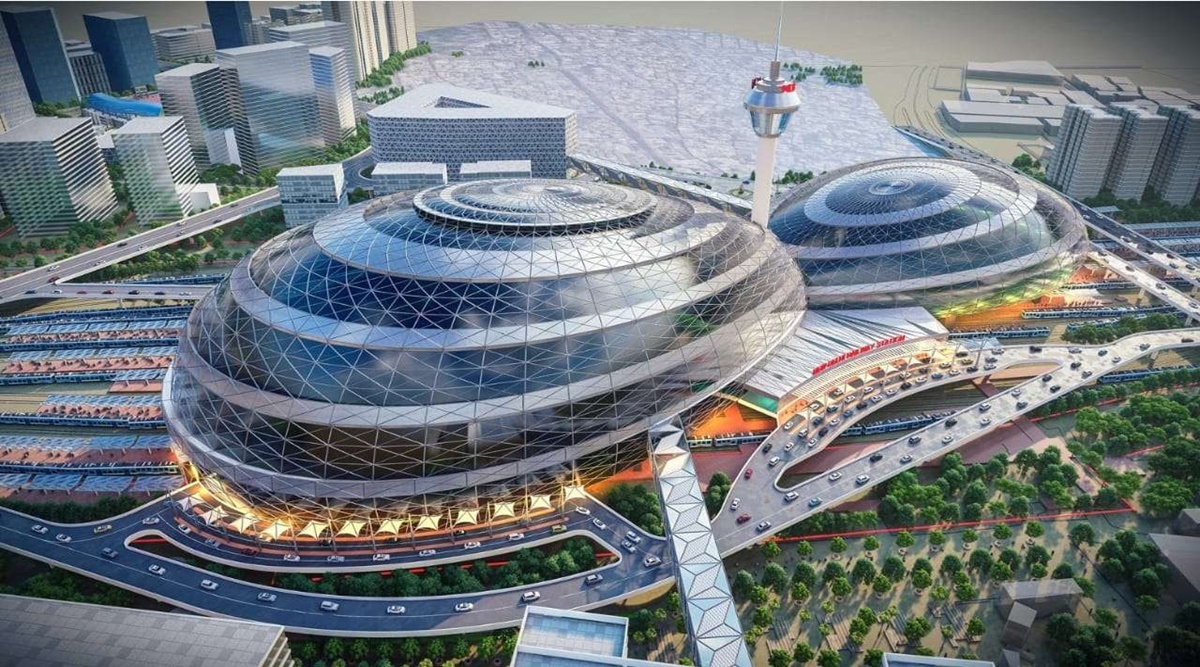jis
Permanent Way Inspector
Staff member
Administator
Moderator
AU Supporting Member
Gathering Team Member
Just came across this "Midnight Railfanning" video. This is at a station named Durgauti on the Grand Chord section of the Howrah (Kolkata) Delhi route, section completed around 1911, which is soon to host 160kph (100mphy) service. Currently trains are limited to 130kph (~80mph) pending completion of fencing to get sealed corridor which IR requires for operating above 80mph. Grand Chord in this area is 5 tracks, 3 for higher speed passenger traffic and 2 tracks dedicated to freight traffic.
We see a parade of overnight Express trains including the so called "King" (Howrah Rajdhani) and "Queen" (Sealdah Rajdhani) of Eastern Railway, and of course @caravanman's Bhubaneshwar Rajdhani too. There is no commentary, only subtitles describing which train powered by what loco type (all WAP-7 you can lookup on Wikipedia) from which homing shed... Enjoy
The codes used to identify loco sheds are as follows:
CNB - Kanpur (Home of the famous IIT Kanpur alma mater of a few of the IT company CEOs in the US)
GZB - Ghaziabad (across the river from Delhi)
HWH - Howrah (across the river from Kolkata, the busiest and largest station in India)
TATA - Tatanagar (the original steel city set up by the Tata's early in the 20th Century)
GMO - Gomoh (a major Junction on the Grand Chord)
Other things one could notice:
We see a parade of overnight Express trains including the so called "King" (Howrah Rajdhani) and "Queen" (Sealdah Rajdhani) of Eastern Railway, and of course @caravanman's Bhubaneshwar Rajdhani too. There is no commentary, only subtitles describing which train powered by what loco type (all WAP-7 you can lookup on Wikipedia) from which homing shed... Enjoy
The codes used to identify loco sheds are as follows:
CNB - Kanpur (Home of the famous IIT Kanpur alma mater of a few of the IT company CEOs in the US)
GZB - Ghaziabad (across the river from Delhi)
HWH - Howrah (across the river from Kolkata, the busiest and largest station in India)
TATA - Tatanagar (the original steel city set up by the Tata's early in the 20th Century)
GMO - Gomoh (a major Junction on the Grand Chord)
Other things one could notice:
- Howrah Rajdhani carries a full Parcel/Mail Van, so current name notwithstanding in old days it would have been called a "Mail" train.
- In some sections of the video you see new electrification stanchions awaiting further installation. These are part of the re-electrification project for this entire route to bring it upto 200kph (125mph capability. This includes installing catenary with shorter span and using the new higher power capacity 2x25kV system
- This entire video was shot within a span of a little less than 2 hours, and it did not included several other slower trains and freights that passed by there during that period, which gives you a sense of intensity of service. Also most of the freight traffic is not shown at all since they run on the DFC (Dedicated Freight Corridor) which is adjacent to these tracks and is not shown in this video. Usually there is a freight train every 5 minutes or so.
- The standardization of equipment that is on display is impressive. All LHB passenger cars and parcel/mail vans and all single class of electric locomotive.
Last edited:


























































